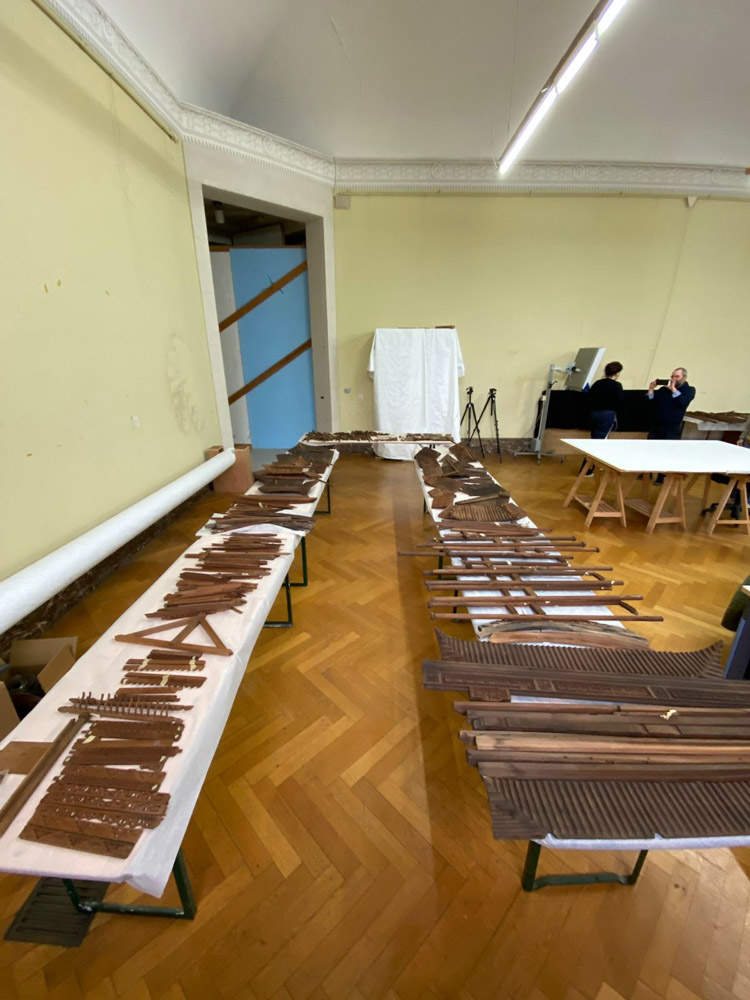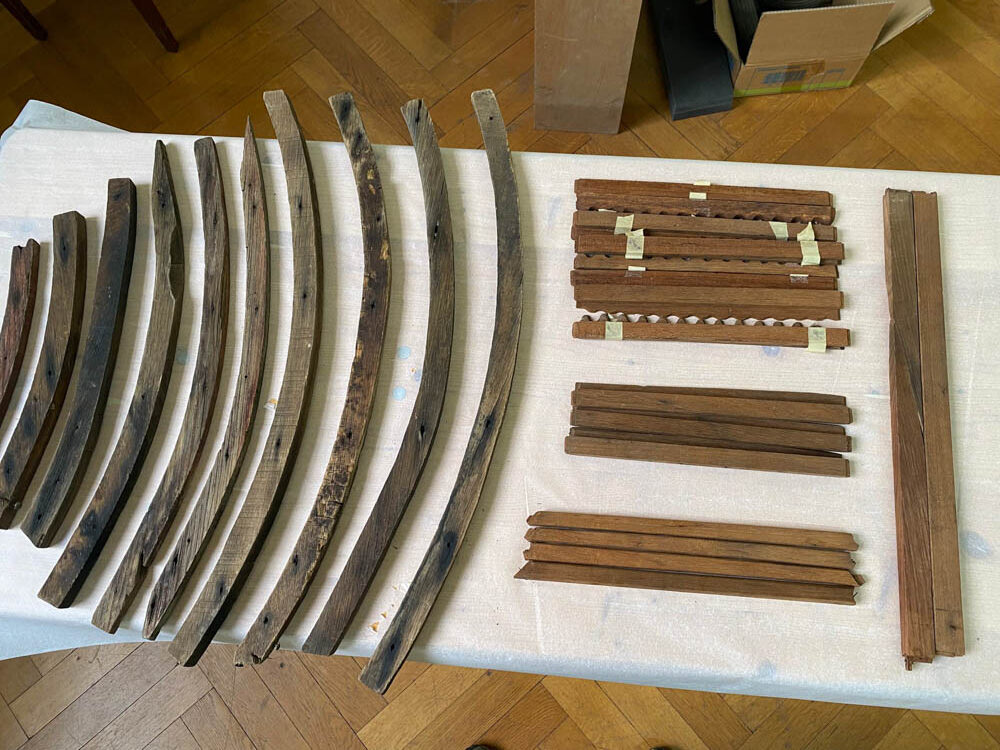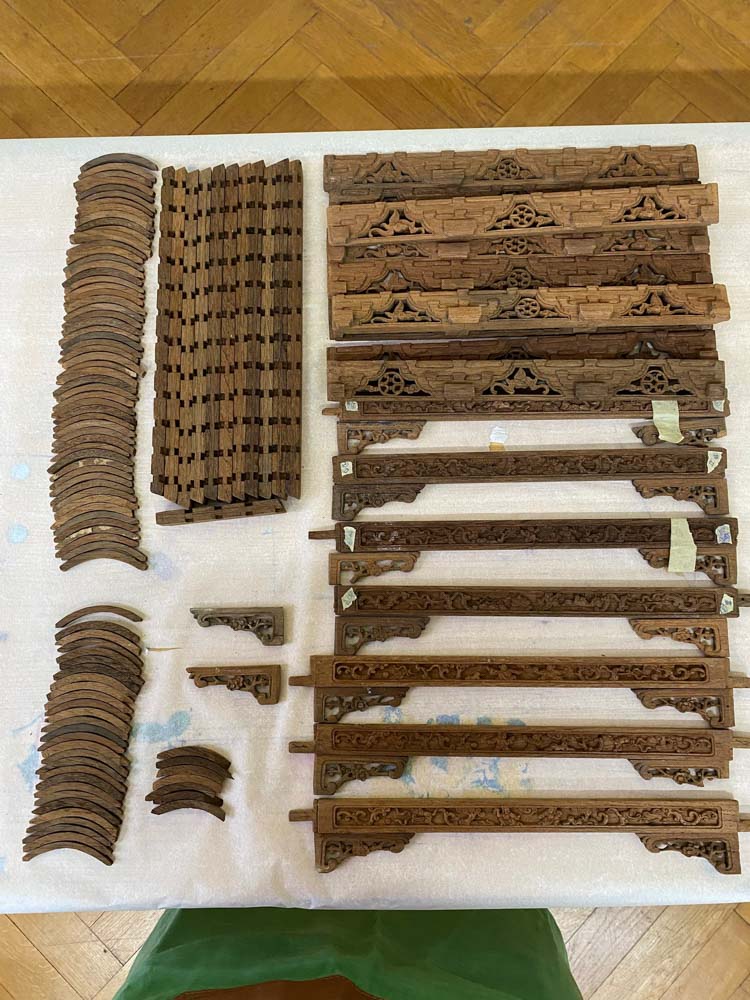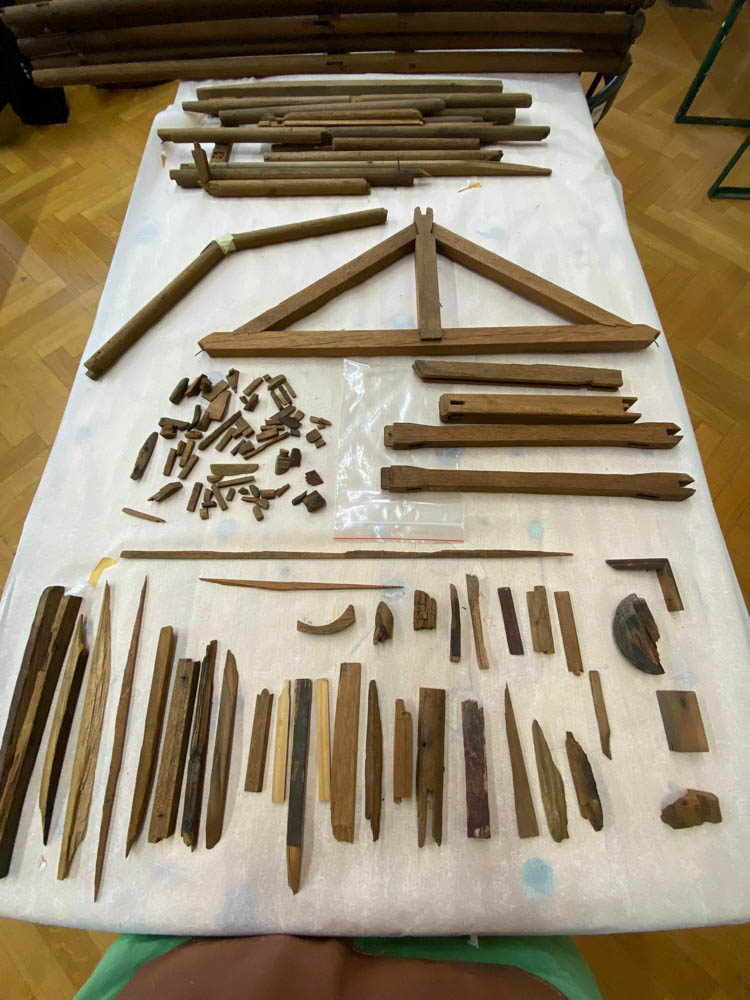When we arrived at the museum, the pieces of the model had been taken out of storage and laid out on tables.



Our first job is to sort through the pieces, trying to understand the construction and what might be missing.
We start with the roof, which will give us an idea of the size of the model. We try to put the pieces together.
We analyse the clues that help us to understand the logic behind the assembly of the parts. We look for a nail on one piece and a hole in the same place on another, interrupting the carving of the roof grooves.
Restoration of the badly damaged roof elements begins, and an attempt is made to provisionally reconstruct the small roofs under the passageways in the side sections. Brackets are hung under the roofs.








As we don’t have a detailed plan of the model, we can get a clearer picture by consulting the plans of the existing situation at IRPA, drawn up by the Régie des Bâtiments for the restoration of the China House in the 1990s.

Many rooms are missing, including those on the central façade. We’re starting to draw up a list of the missing pieces, with a view to using a 3D printer to make them out of wood fibre. To ensure that we have the dimensions of the missing parts, we are tracing the reproduction of the plan on a wooden board that will serve as the base for the model.
The museum provided us with a 21mm thick multiplex board (305cm x 135 cm). The model, which is 1/10 scale, is 3m wide and 1.80m high. In order to transfer the layout of the model to the base, we used the sketch plan from the Shangai Notebook and the plans of the existing situation.

To complete this first week’s work, we simulated the position of the small roofs under the gangways in the side sections on the base of the model.

We still have quite a few questions, mainly about the missing parts and the structure of the model. We have pieces of different materials and woods, which lead us to believe that the model has already been restored.
We contacted Nicolas Godelet, an architect specialising in Chinese architecture. He’s coming to see us on 10 December to tell us more about traditional Chinese frameworks, as well as the 3D printing of the parts. In the meantime, we’re continuing to concentrate on the roofs and sides, with a particular focus on cleaning the parts. We are also carrying out an exhaustive inventory of the parts to be modelled.
